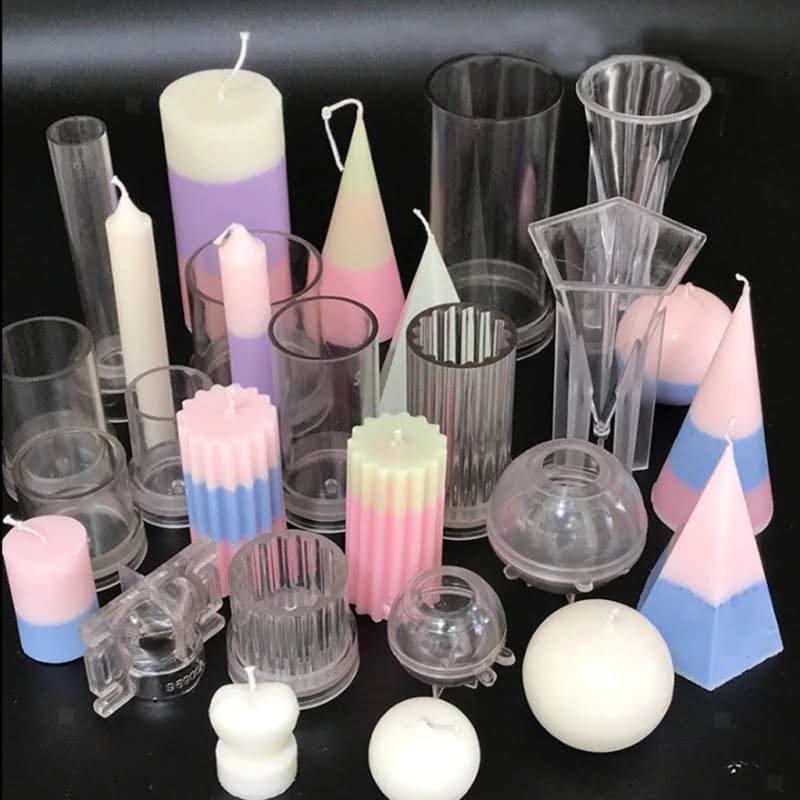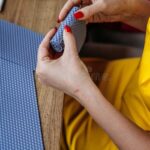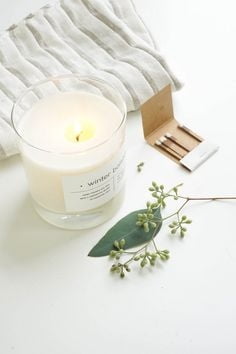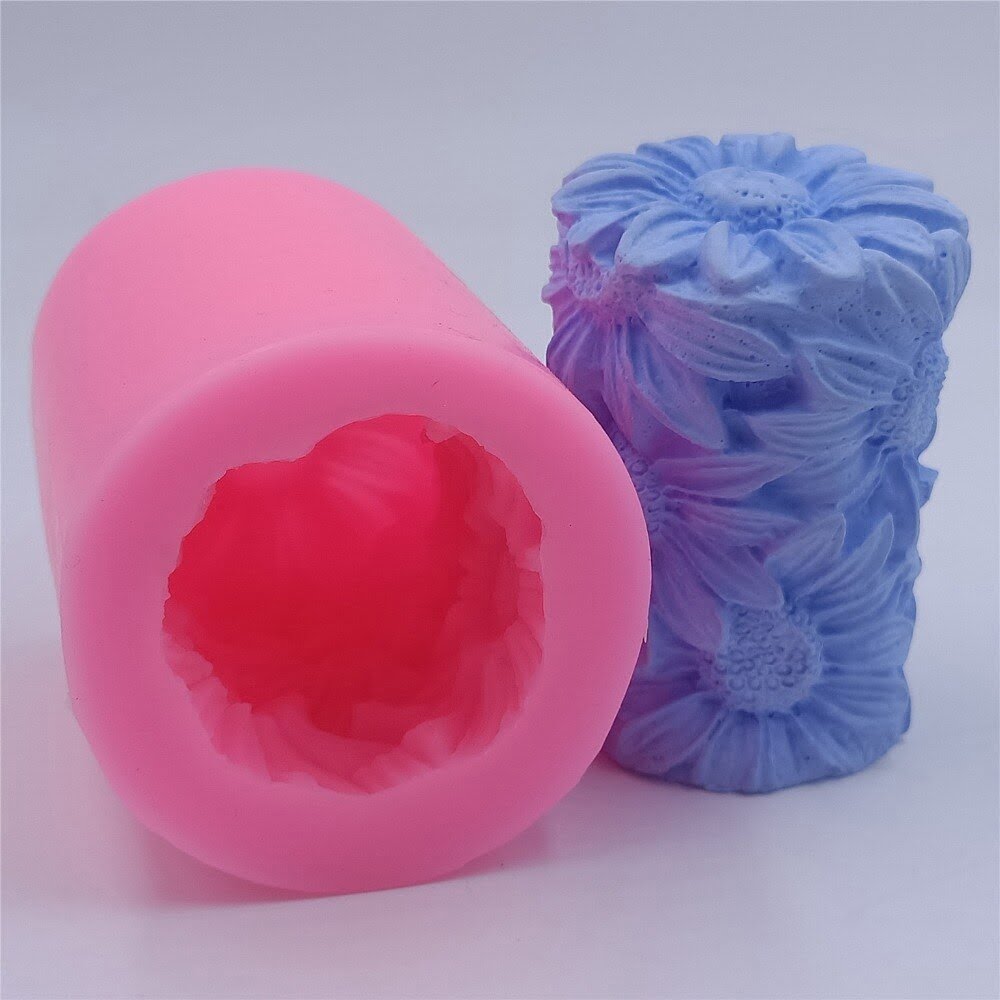A candle making pitcher is an essential tool for anyone interested in the art of candle making. It is a special container designed specifically for melting and pouring wax, making the candle making process more efficient and precise. With its unique features and functionality, a candle making pitcher ensures that you can create beautifully crafted candles with ease.
But why exactly is a candle making pitcher useful in the candle making process? One of its key advantages lies in its ability to handle high temperatures. Candle waxes need to be heated to specific temperatures for optimal melting and pouring consistency. A dedicated candle making pitcher is made from heat-resistant materials, allowing it to withstand the high temperatures required without damaging or warping.
Furthermore, a candle making pitcher often features a convenient spout or nozzle, which makes pouring the melted wax into various containers a breeze. This eliminates the mess and potential spills that can occur when using alternative containers for melting wax. The spout also allows for greater precision in pouring, ensuring an even distribution of wax and reducing waste.
In addition to these practical benefits, using a candle making pitcher also provides a more structured approach to the candle-making process. Its dedicated design encourages organization and cleanliness in your workspace, leading to better results overall. With a clear understanding of what a candle making pitcher is and why it is essential, let’s delve deeper into exploring the different types available on the market and their distinct features.
Understanding the Different Types of Candle Making Pitcher
A candle making pitcher is an essential tool for any candle maker. It is specifically designed for measuring, melting, and pouring wax in a precise and controlled manner. Understanding the different types of candle making pitchers available in the market can greatly enhance the candle making experience.
There are various types of candle making pitchers available, each with its own unique features and benefits. The most common types include stainless steel pitchers, glass pitchers, and aluminum pitchers. Stainless steel pitchers are durable and heat-resistant, making them ideal for melting wax directly on a stovetop or in a double boiler.
Glass pitchers allow for easy monitoring of the melting process and are often microwave-safe for added convenience. Aluminum pitchers are lightweight and excellent for pouring large quantities of wax as they have a long spout that allows for more precision.
When selecting a candle making pitcher, it is important to consider factors such as capacity, material, pouring mechanism, and ease of cleaning. Capacity refers to the volume or amount of wax that the pitcher can hold. Beginners may find smaller capacity pitchers more manageable while experienced candle makers may prefer larger ones to accommodate larger batches.
| Candle Making Pitcher | Material | Features |
|---|---|---|
| Stainless Steel Pitcher | Stainless Steel | Durable; heat-resistant; ideal for larger batches; can be used on stovetop or in a double boiler. |
| Glass Pitcher | Glass | Allows easy monitoring; microwave-safe; convenient pouring spout. |
| Aluminum Pitcher | Aluminum | Lightweight; long spout for precision pouring; suitable for larger quantities. |
Preparing Your Workspace
The Importance of a Clean and Organized Workspace
Before diving into the candle making process using a pitcher, it’s crucial to ensure that your workspace is clean and organized. A cluttered and messy workspace can not only hinder your creativity but also pose safety risks during the candle making process. Here are a few reasons why having a clean and organized workspace is essential:
- Safety Measures: A clean and organized workspace helps minimize accidents and mishaps during candle making. Eliminating unnecessary items or clutter reduces the risk of knocking over containers, spilling wax, or accidentally igniting flammable materials.
- Efficiency and Productivity: With a clean and organized workspace, you’ll be able to locate your tools, ingredients, and equipment easily. This saves time during the candle making process as you won’t have to waste precious minutes searching for items.
- Creativity and Inspiration: An uncluttered space promotes clear thinking and allows you to focus on creating beautiful candles. It creates a calm environment that stimulates creativity and helps in generating new ideas for unique candle designs.
Tips for Preparing Your Workspace
Now that we understand the importance of having a clean workspace, let’s delve into some practical tips for preparing your space before starting the candle making process:
- Clear the Space: Begin by removing any unnecessary items from your work area. Put away unrelated objects such as papers, food, or other distractions that could potentially cause accidents or interfere with your concentration.
- Wipe Down Surfaces: Use a damp cloth or disinfectant wipe to thoroughly clean all surfaces where you’ll be working. This includes tables, countertops, shelves, or any other area that may come in contact with wax or other materials.
- Organize Tools and Equipment: Take inventory of all necessary tools and equipment required for candle making using a pitcher. Arrange them neatly within reach so that you can easily access them during the process. Consider using storage containers or organizers to keep everything in place.
- Prepare a Checklist: Before starting, create a checklist of all the steps involved in the candle making process. Having a systematic plan will help you stay organized and ensure that you don’t miss any crucial steps.
By following these simple tips, you’ll be well-prepared with a clean and organized workspace before embarking on your candle making journey using a pitcher.
Choosing the Right Wax
When it comes to candle making, choosing the right wax is essential for achieving desired results. Different types of waxes have varying properties that can affect aspects such as burn time, scent throw, and appearance of the finished candle. Here are some factors to consider when selecting a wax for your candle making project:
- Soy Wax: Soy wax has gained popularity in recent years due to its natural and environmentally friendly properties. Made from soybean oil, it offers a cleaner burn with minimal soot and a longer burning time compared to other waxes. Soy wax is compatible with most candle making pitchers due to its lower melting point.
- Paraffin Wax: Paraffin wax is one of the most commonly used waxes in candle making due to its affordability and versatility. It provides excellent scent throw and vibrant color possibilities. However, paraffin emits more soot compared to other waxes, which may result in blackening of containers or walls over time. Paraffin wax typically requires higher temperatures for melting, so make sure your candle making pitcher can handle these temperatures safely.
- Beeswax: Beeswax is a natural and premium option that offers a distinct honey-like fragrance and a beautiful golden color. It has a high melting point, which means it requires more heat to melt properly. Ensure that your chosen candle making pitcher can withstand these higher temperatures if you plan on working with beeswax.
- Gel Wax: Gel wax is a unique type of wax that allows you to create translucent candles resembling gelatin or water. This type of wax is typically transparent and works well for embedding objects like seashells or decorative elements within the candles.
Gel wax requires specific techniques and equipment due to its higher melting point and different consistency compared to other waxes. Make sure to select a candle making pitcher suitable for melting and pouring gel wax.
Regardless of the type of wax you choose, it is important to consider the compatibility with your candle making pitcher. Look for a pitcher that is made from heat-resistant materials such as stainless steel or heat-resistant glass. These materials can withstand high temperatures without warping or cracking, ensuring safe and efficient use throughout the candle making process.
Remember that different waxes have varying melting points, so make sure your chosen candle making pitcher can handle the specific temperature requirements of the wax you plan on using. This will ensure that your wax melts smoothly and evenly, giving you consistent results every time.
By selecting the right wax and ensuring its compatibility with your candle making pitcher, you are setting yourself up for a successful and enjoyable candle making experience. With the right materials in hand, you can now move on to the next step in creating your perfect candles – measuring and melting the wax using your reliable candle making pitcher.
Measuring and Melting the Wax
Using a candle making pitcher for measuring and melting wax is essential for achieving precise and accurate results in your candle making project. Whether you are a beginner or an experienced candle maker, following the step-by-step instructions below will guide you in measuring and melting the wax using the pitcher effectively.
- Measure the Wax: The first step is to measure the appropriate amount of wax needed for your candle. Using the measurement markings on your candle making pitcher, pour the desired quantity of wax into the pitcher. If you are unsure about how much wax to use, refer to your candle making recipe for specific measurements.
- Set Up a Double Boiler: Fill a large pot with water and place it on the stove over medium heat. Then, place your candle making pitcher containing the measured wax inside the pot. The water should be simmering gently, creating indirect heat to melt the wax safely and evenly.
- Melt the Wax: Allow the water to heat gradually until it reaches a temperature that melts the wax steadily but not too quickly. Stir occasionally with a heat-resistant spoon or stirrer to ensure even melting. Be patient during this process as rushing can lead to uneven melting or burning of the wax.
- Monitor Temperature: Using a candy thermometer or a digital thermometer, monitor the temperature of the melted wax regularly. Different waxes have different melting points, so it’s crucial to stay within the recommended temperature range specified by your chosen wax type.
- Remove from Heat: Once your wax reaches its optimal melting temperature, carefully remove the candle making pitcher from heat using oven mitts or potholders to protect yourself from burns.
Remember, safety is paramount when working with hot materials like melted wax. Always exercise caution and keep flammable items away from your workspace during this process.
Following these step-by-step instructions will help ensure that you achieve precise measurements and get perfectly melted wax every time you use a candle making pitcher in your project.
Adding Fragrance and Colors
Adding fragrance oils and colors to your candles can truly elevate the ambiance and create a more enjoyable experience for both yourself and those who will be enjoying your creations. The candle making pitcher is an essential tool in this process, as it allows for precise measurement and easy mixing of fragrances and colorants into the melted wax.
When it comes to fragrance oils, it’s important to choose high-quality oils that are specifically designed for candle making. These oils are typically concentrated and have been tested for compatibility with wax. To add fragrance to your melted wax using a candle making pitcher, start by determining how much fragrance you want to use based on your personal preference or the manufacturer’s recommendations.
Measure out the desired amount of fragrance oil using a separate measuring container, then pour it into the candle making pitcher along with the melted wax. Stir gently but thoroughly to ensure even distribution of the fragrance throughout the entire batch.
Colorants also play a significant role in creating visually appealing candles. There are various types of colorants available, including liquid dyes, dye chips, and powdered pigments. Depending on your preference, you can choose from a wide range of colors to suit your desired aesthetic.
To add color to your melted wax using a candle making pitcher, follow similar steps as with fragrance oils. Measure out the appropriate amount of colorant based on your desired intensity or manufacturer’s guidelines, then mix it into the melted wax in the pitchers slowly while stirring continuously until fully blended.
Remember that when adding fragrances and colorants, less is often more. Start with small amounts and gradually increase if needed.
It’s also important to keep in mind that not all fragrances or colorants are compatible with all types of waxes or containers, so be sure to check their compatibility before adding them to your pitcher. By following these techniques and experimenting with different fragrance and color combinations, you can create unique candles that not only look beautiful but also fill the room with delightful scents.
In the next section, we will discuss how to use the candle making pitcher to pour the melted wax into your chosen containers, ensuring even distribution and avoiding spills.
Pouring the Wax
Preparing Containers
Before pouring the melted wax into your chosen containers, it is important to prepare them properly to ensure a smooth and successful process. Start by cleaning the containers thoroughly, removing any dust or debris that may affect the quality of your candles. To do so, wash them with warm soapy water and allow them to dry completely before use.
Additionally, consider using a wick centering device or hot glue gun to secure the wicks in place at the bottom of each container. This will ensure that your wicks stay centered while pouring the wax and guarantee an even burn throughout the life of the candle.
Using a Pouring Funnel
To avoid spills and achieve even distribution of the melted wax, utilizing a pouring funnel can be a great aid when using a candle making pitcher. A pouring funnel fits securely onto the spout of the pitcher, allowing for controlled pouring into smaller openings without any mess.
When using a pouring funnel, hold it firmly in place on top of your chosen container as you pour. The narrow spout of the funnel helps direct and control the flow of wax, minimizing any splashing or spills. Take care not to overfill the containers – leave some space at the top for room to attach the wick and ensure proper burning.
Avoiding Air Bubbles
Air bubbles can sometimes occur when pouring wax into containers. To prevent this, gently tap or lightly shake each filled container after pouring to release any trapped air bubbles. You can also use a heat gun or blow dryer on its lowest setting to remove any small bubbles that may remain on the surface of the wax.
Remember to work quickly but carefully when using a candle making pitcher to pour the wax. Be mindful of how fast or slow you pour, maintaining a steady hand throughout each pour for consistent results.
By following these tips and techniques for pouring wax using a candle making pitcher, you can achieve professional-looking candles that burn evenly and beautifully. With practice and attention to detail, you’ll become more skilled in pouring wax, allowing you to create stunning candles that enhance any space.
Cleaning and Maintenance
To ensure the longevity and efficiency of your candle making pitcher, it is important to establish a regular cleaning and maintenance routine. By properly maintaining your pitcher, you can prevent any build-up or residue that may affect the quality of your candles. Here are some tips on how to clean and maintain your candle making pitcher:
- Cleaning: After each use, it is essential to thoroughly clean your pitcher to remove any wax residue. Start by pouring out any remaining wax into a disposable container. Then, fill the pitcher with hot water and gentle dish soap. Use a soft cloth or sponge to scrub the pitcher, paying attention to any areas with stubborn wax build-up. Rinse well with warm water to ensure all soap residue is removed.
- Removing Stubborn Residue: If you encounter any stubborn residue that doesn’t come off easily, there are a few methods you can try. One option is to place the pitcher in a larger pot filled with boiling water, allowing the heat to melt off the remaining wax. Another method is to use rubbing alcohol or vinegar mixed with hot water to soak the pitcher for about 15-20 minutes before scrubbing it.
- Drying: Once the pitcher is clean, make sure it is fully dry before storing it away. Leaving any moisture in the pitcher could lead to mold growth or damage over time. You can either air-dry the pitcher upside down on a drying rack or use a lint-free cloth to carefully dry all surfaces.
Regularly inspecting your candle making pitcher for cracks or damage will also contribute to its longevity and efficiency. If you notice any cracks or other signs of wear and tear, it may be time to replace your pitcher for optimal results in your candle making process.
Proper cleaning and maintenance of your candle making pitcher not only ensures its longevity but also contributes to successful and enjoyable candle-making experiences every time you use it.
| Cleaning and Maintenance Tips for Candle Making Pitchers |
|---|
| 1. Thoroughly clean the pitcher after each use, using hot water and mild dish soap. |
| 2. Use boiling water, rubbing alcohol, or vinegar to remove stubborn wax residue if needed. |
| 3. Dry the pitcher completely before storing to prevent mold growth or damage. |
| 4. Regularly inspect the pitcher for cracks or other signs of wear and tear. |
Troubleshooting and Tips
Troubleshooting and Tips:
Using a candle making pitcher can greatly simplify the candle making process, but like any craft, issues can arise. Here are some common problems you may encounter when using a candle making pitcher and how to troubleshoot them:
- Wax Spills: One of the most frustrating problems that can occur is wax spills when pouring into containers. To avoid this issue, make sure you are pouring the wax slowly and steadily. If you notice overflow, stop pouring immediately to prevent further spills. Additionally, ensure that your containers are on a stable surface and are level to prevent any tipping.
- Uneven Distribution of Fragrance and Color: Sometimes, you may find that the fragrance or color didn’t evenly disperse throughout the melted wax. To address this problem, try stirring the mixture thoroughly with a wooden skewer or chopstick before pouring it into the containers. This will help distribute the additives evenly and result in a more uniform scent and color in your finished candles.
- Difficulty Pouring from Pitcher: If you’re having trouble with smoothly pouring from your candle making pitcher, check for any blockages in the spout or debris that might be causing an obstruction. Clean the spout thoroughly with warm soapy water and use a small brush to remove any buildup. Additionally, make sure you’re holding the pitcher at a slight angle while pouring to allow for better flow.
Here are some additional tips and tricks to optimize your use of a candle making pitcher:
- Use a double boiler method: When melting wax in your candle making pitcher, it’s best to employ a double boiler setup rather than directly heating the pitcher on heat sources like stovetops or microwaves. This prevents overheating or scorching of the wax.
- Keep track of temperatures: It is essential to monitor temperatures accurately when using a pitcher for melting wax as different types of wax require specific temperature ranges. Use a reliable thermometer to ensure your wax is heated to the correct temperature for optimal results.
- Consider investing in multiple pitchers: If you frequently make candles or experiment with different scents and colors, having multiple pitchers can make the process more efficient. This allows you to work on multiple projects simultaneously without needing to clean and wait for one pitcher before using it again.
By troubleshooting common issues and implementing these tips and tricks, you can optimize your use of a candle making pitcher and achieve better results in your candle making endeavors. Happy crafting.
Conclusion
In conclusion, this article has provided a comprehensive guide on how to use a candle making pitcher effectively. Throughout the discussion, we have learned about the different types of candle making pitchers available in the market and their unique features. We have also explored the importance of preparing a clean and organized workspace before embarking on the candle making process using a pitcher.
One key takeaway from this article is the significance of choosing the correct wax for your candle making project and ensuring its compatibility with the candle making pitcher. By following step-by-step instructions on measuring and melting the wax using the pitcher, readers can achieve utmost precision in their candle creations. Furthermore, we have discussed techniques for adding fragrance oils and colorants to enhance the ambiance of our candles.
The use of a candle making pitcher during pouring is crucial in achieving even distribution of melted wax into chosen containers, avoiding spills or uneven candles. Proper cleaning and maintenance routines mentioned in this article will ensure longevity and efficiency of our candle making pitcher.
Frequently Asked Questions
How do you use a candle pouring container?
To use a candle pouring container, start by placing it on a heat-resistant surface. Next, carefully measure and melt your candle wax using a double boiler or microwave. Once the wax is completely liquified, add your desired amount of fragrance oil and stir gently to ensure even distribution. Prepare your wick by attaching it to the bottom of the container using a wick sticker or hot glue.
Then, slowly pour the melted wax into the container, ensuring that the wick remains centered. Allow the candle to cool and harden completely before trimming the wick to about ¼ inch. Remember to always follow safety guidelines when working with hot wax and open flames.
How do you heat a wax jug?
Heating a wax jug can be done using various methods such as a double boiler or microwave. If using a double boiler, fill the lower pot with water and place it on medium heat until simmering.
Then, place the wax jug securely in the top pot of the double boiler and allow it to melt slowly while stirring occasionally for even heating. If using a microwave-safe wax jug, simply place it in the microwave and heat in short bursts at medium power until fully melted, taking care to stir between each interval to prevent overheating or burning.
How do you get the best scent throw when making candles?
Achieving the best scent throw when making candles involves several factors to consider. Firstly, ensure you are using high-quality fragrance oils specifically designed for candle making. Opt for oils with good reviews and recommendations from reliable sources within the candle-making community.
It’s important not to exceed recommended fragrance load limits based on your specific wax type as overloading can lead to poor scent throw or other issues like tunneling or poor burn performance. Additionally, proper temperature control during fragrance addition is crucial – adding fragrance oil at around 175°F (79°C) when stirring into melted wax can help promote better fragrance dispersion throughout the candle mixture. Lastly, allowing candles an appropriate curing time (usually 48-72 hours) before testing their scent throw is essential as it allows the fragrance to fully bind with the wax and develop its optimal aroma.

Welcome to my candle making blog! In this blog, I will be sharing my tips and tricks for making candles. I will also be sharing some of my favorite recipes.





